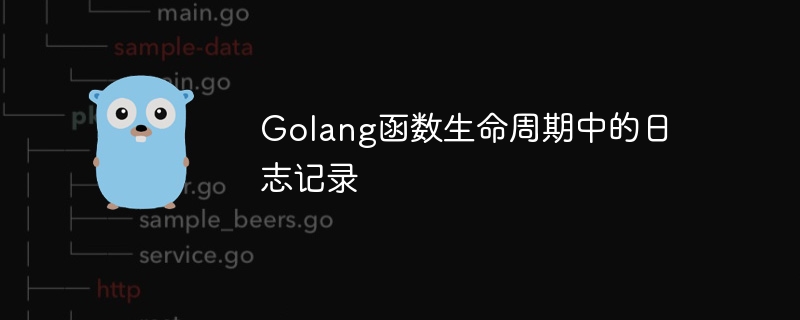Home >Backend Development >Golang >Logging in Golang function life cycle
Logging in Golang function life cycle
- 王林Original
- 2024-04-18 13:27:021161browse
There are 4 stages that can be logged in the Go function life cycle: Initialization: When the one-time initialization code is called before execution Cleanup: When the cleanup code is called after the function is executed Execution: The main execution stage of the function Panic: When a panic occurs in the function

Logging in Go function lifecycle
In Go, logging is an important feature because it allows development People log application activities and events. Logging during the function lifecycle is particularly useful as it helps developers track various stages of function execution.
In Go, there are four main stages in the function life cycle:
- Initialization: When the one-time initialization code is called before the function is executed, this stage is will happen.
- Cleaning: After the function execution is completed, the cleaning code will be called at this stage.
- Execution: This is the main stage of function execution.
- Panic: If a panic occurs in the function, this stage will be entered.
At each stage of the function life cycle, you can use the log package to record log messages. The package provides various functions to log different levels of messages as required, such as log.Info, log.Warning and log.Error.
Practical case:
The following is an example of using the log package to record log messages at each stage of the function life cycle:
package main
import "log"
func main() {
// 初始化阶段
log.Println("Initializing function...")
// 执行阶段
log.Println("Executing function...")
// 清理阶段
defer log.Println("Cleaning up function...")
// 恐慌阶段
if true {
log.Panicln("Panic occurred!")
}
}Running this program will output the following log message:
Initializing function... Executing function... Cleaning up function... panic: Panic occurred!
By logging log messages at each stage of the function life cycle, developers can easily track function execution and identify any potential problems or anomalies.
The above is the detailed content of Logging in Golang function life cycle. For more information, please follow other related articles on the PHP Chinese website!

